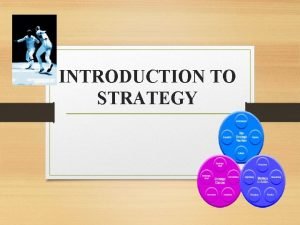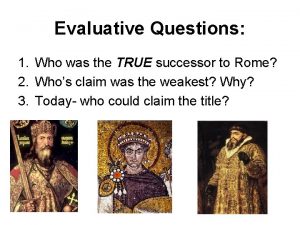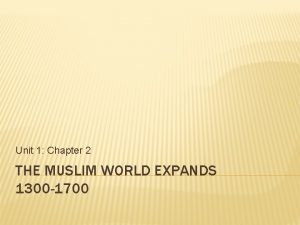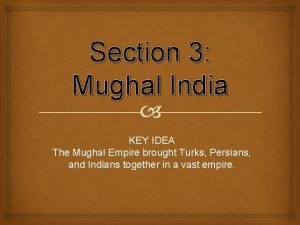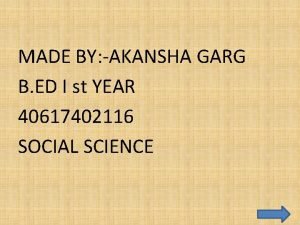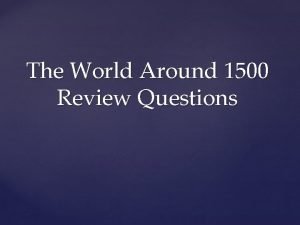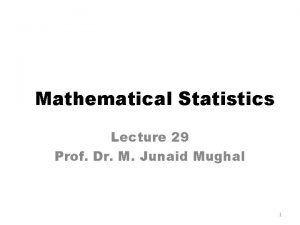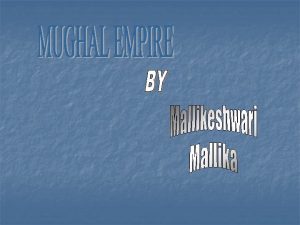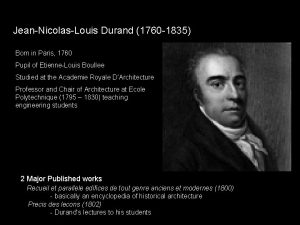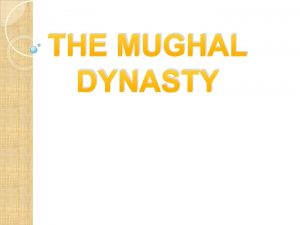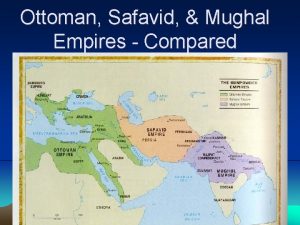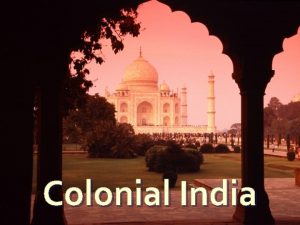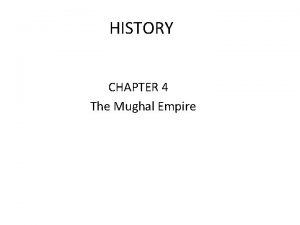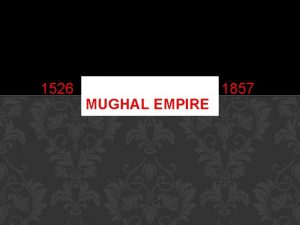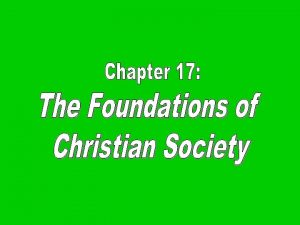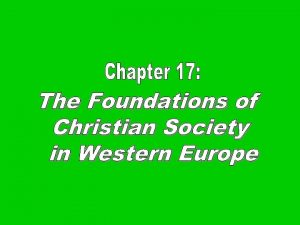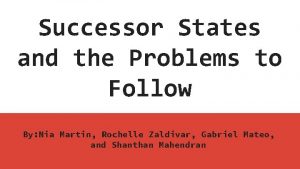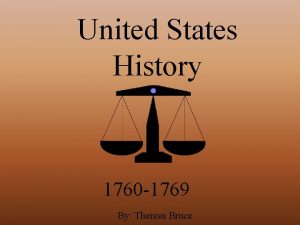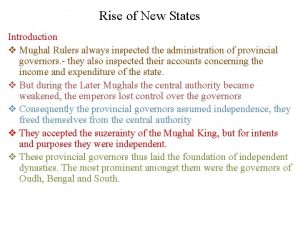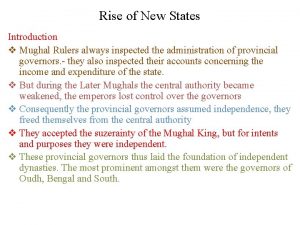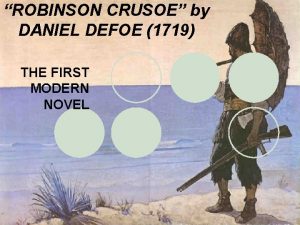Mughal Successor States 1719 1760 s NizamulMulk Asaf



















- Slides: 19

Mughal Successor States: 1719 -1760 s Nizam-ul-Mulk Asaf Jah and Hyderabad

The “Nawabs” and their states • “nawab” comes from the Persian naib, which means “deputy. ” • Although the Nawbas of Bengal, Awadh, and Hyderabad were independent from the Mughal Emperor by the mid-18 th c. the fiction of Mughal supremacy was preserved • The khutba continued to be read in the Mughal Emperor’s name, and coins struck in his name as well.


Hyderabad—a singular case? • Unlike the Northern Nawabi states Hyderabad had a more contentious relationship with the Mughal court • This was based on the tensions b/w the founder of the state Nizam-ul Mulk and the nobles at court—particularly Zulfikar Khan and the Sayyid Brothers. • As the head of the powerful Turani (Central Asian) faction the Nizam was free to oppose these groups from an independent base

Nizam-ul Mulk’s Family Background • Part of the new nobility formed under Aurangzeb • Grandfather came from Bukhara during the 1658 succession crisis, hired by Aurangzeb • Father moved from Bukhara as well to join family in 1660 s. • Nizam-ul Mulk the first generation to be born on Indian soil

Family background Cont. • Family from an orthodox Sunni background with very close connections to Aurangzeb’s reforms • Grandfather held positions in army and administration, including subedaris and as sadr (head of religious donations) • Father a high-level commander before being blinded by smallpox • All three generations had extensive experience in deccan under Aurangzeb, and their beliefs were shaped in that environment

Asaf Jah, Nizam-ul Mulk

Succession Struggles, 1708 -1719 • When Bahadur Shah came to the throne Nizamul Mulk was given the subedari of Awadh, but also kept distant from politics • Zulfikar Khan and the Nizam did not get along, however Azim-us-Shan cultivated him • During the 1712 succession struggle Nizam-ul Mulk and Turanis stay aloof from the battle causing the defeat of Zulfikar Khan and Jahandar Shah

Bahadur Shah r. 1707 -1712 Jahandar Shah r. 1712 -1713 (Zulfikar Khan) Azim-ush Shan Farukhsiyar 1713 -1719 (Sayyid Bros. ) Rafi-ush Shah Rafi-ud Darjat April 1719 Rafi-ud Daulah June 1719 Jahan Shah Muhammad Shah 1719 -48

After 1713 • Sayyid Brothers anxious to have Nizam-ul Mulk kept away from capital, but also suspicious of letting him create a base in the deccan • Given the subedari of the Deccan province three time, recalled twice – 1713 -1715 – 1720 -22 – 1722 -1748 (becomes independent)

Break: Discuss reading

1. Why did Nizam-ul-Mulk disapprove of the Emperor’s two favorites—Haider Quli Khan and Kuki Jiu? 2. What were Nizam-ul-Mulk’s relationship with the Marathas like during this period? 3. Why did the Mughals fail to curb rebellion in Rajasthan? 4. For Chandra, what does the failure of Nizam-ul. Mulk to guide imperial policy indicate?

Areas of tensions b/w Nizam-ul Mulk and Sayyid Bros. • Don’t see eye-to-eye on negotiating with Marathas and Rajputs—Sayyid bros. want to reconcile, Nizam-ul Mulk favors suppression • Disagree about jizya • Have different power bases—the Sayyids with local gentry and Khanzads, the Nizam with newer Sunni aristocracy and Turanis

Pattern of recall and engagement • In 1713 Nizam-ul Mulk had gone to the Deccan with the intention of removing the Marathas, who were internally divided • Repudiated their claims to sardeshmukhi and chauth • Orders a new assessment of revenue, more soliders • Is recalled when Marathas complain, retreats to his jagirs in north and announces his “retirement”

Reign of Muhammad Shah • Nizam sent back to the Deccan where things are deteriorating in 1720. • This time creates a series of secret accords with Marathas. • Is called back to court in 1722 to become Wazir, a position that he had long coveted. • Muhammad Shah was hoping to regain control by playing with strong group of nobles against the other

New Strategy and Independence • In 1723 meets the Peshwa in Malwa and concludes a secret treaty to keep Marathas from expanding north • Attempts to clean up the politics of Delhi, but finds resistance on multiple levels • Returns to Deccan and begins a new phase of consolidating power in the Deccan.

Consolidating Power • Creates agreements with local zamindars and deshmukhs to bring in revenue • Relies on contracts with revenue farmers in areas that were further away from capital of Aurangabad • Negotiates with Marathas an agreement to use his own revenue collectors for Chauth rather than allowing a parallel system of revenue collection to exist • Until death in 1748, system functions smoothly • After 1748 French and English become embroiled in succession struggle at Hyderabad, henceforth English have a resident at the court and the Nizams of Hyderabad become dependent on English protection.

English possession after 1757

Questions for Grewal Reading • • According to Grewal why were the Mughals unable to stop the Sikh rebels from becoming powerful after they successfully put down Banda’s rebellion in 1715? In what ways were the Sikhs’ rise to power different from that of the Mughal successor states such as Hyderabad? Compare and contrast the Sikhs with the Marathas (particularly from Gordon’s text). In what ways are they similar or different? How egalitarian was Sikh rule?
 Blue care network e referral
Blue care network e referral Please enter the missing figure: 13, 57, 911, 1315, 1719
Please enter the missing figure: 13, 57, 911, 1315, 1719 Successor number
Successor number Map of byzantine empire under justinian
Map of byzantine empire under justinian The true successor
The true successor Quien es asaf en la biblia
Quien es asaf en la biblia Justin heeren
Justin heeren Características de asaf
Características de asaf Where was the mughal empire located
Where was the mughal empire located Ottoman, safavid, and mughal empires venn diagram
Ottoman, safavid, and mughal empires venn diagram Ottoman safavid and mughal empire map
Ottoman safavid and mughal empire map The mughal empire in india chapter 18 section 3
The mughal empire in india chapter 18 section 3 Akansha jahangir
Akansha jahangir First mughal emperor of india
First mughal emperor of india Mughal empire location
Mughal empire location Causes of the downfall of the mughal empire
Causes of the downfall of the mughal empire Gunpowder empires map
Gunpowder empires map The average zinc concentration recovered from a sample
The average zinc concentration recovered from a sample Mughal empire 1450 to 1750
Mughal empire 1450 to 1750 Birth of prince salim
Birth of prince salim

